Abstract
INTRODUCTION: In India, approximately 20 percent of children under the age of four suffer from severe malnutrition, while half of all the children suffer from undernutrition. The contributions of knowledge and attitudes of nutrition-conscious behaviors of the mothers to childhood malnutrition has been unclear. The purpose of this study was to explore maternal knowledge of the causes of malnutrition, health-care-seeking attitudes and socioeconomic risk factors in relation to children's nutritional status in rural south India. METHODS: A case-controlled study was conducted in a rural area in Tamil Nadu, India. Thirty-four cases and 34 controls were selected from the population of approximately 97,000 by using the local hospital's list of young children. A case was defined as a mother of a severely malnourished child under four years of age. Severe malnutrition was defined as having less than 60 percent of expected median weight-for-age. A control had a well-nourished child and was matched by the location and the age of the child. Interviews obtained: (1) socioeconomic information on the family, (2) knowledge of the cause of malnutrition and (3) health-care-seeking attitudes for common childhood illnesses, including malnutrition. RESULTS: Poor nutritional status was associated with socioeconomic variables such as sex of the child and father's occupation. Female gender (OR = 3.44, p = .02) and father's occupation as a laborer (OR = 2.98, p = .05) were significant risk factors for severe malnutrition. The two groups showed a significant difference in nutrition-related knowledge of mild mixed malnutrition (OR = 2.62, p = .05). No significant difference was apparent in health-care-seeking attitudes. Based on their traditional beliefs, the mothers did not believe that medical care was an appropriate intervention for childhood illnesses such as malnutrition or measles. DISCUSSION: The results suggested that the gender of the child and socioeconomic factors were stronger risk factors for malnutrition than health-care availability and health-care-seeking attitudes. The father's occupation was a more accurate indicator for malnutrition than household income. These results suggest a need for intensive nutritional programs targeted toward poor female children and their mothers.
Full text
PDF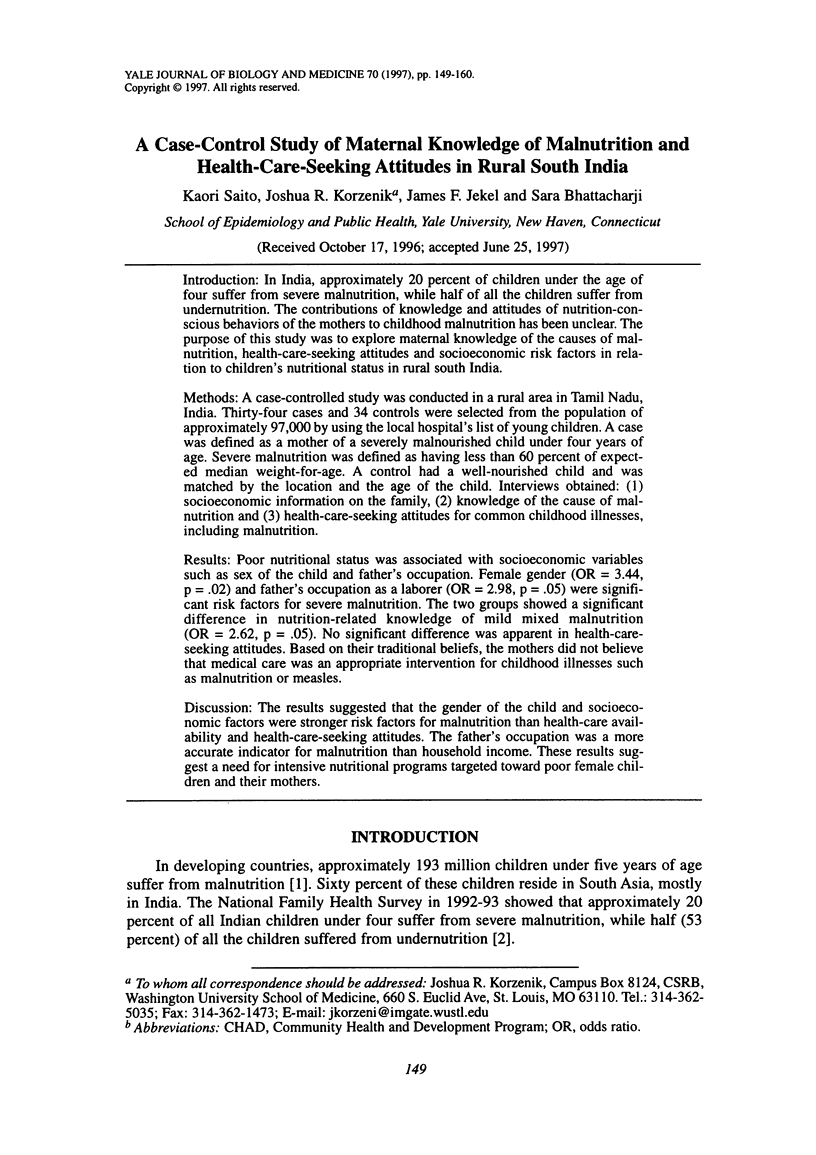
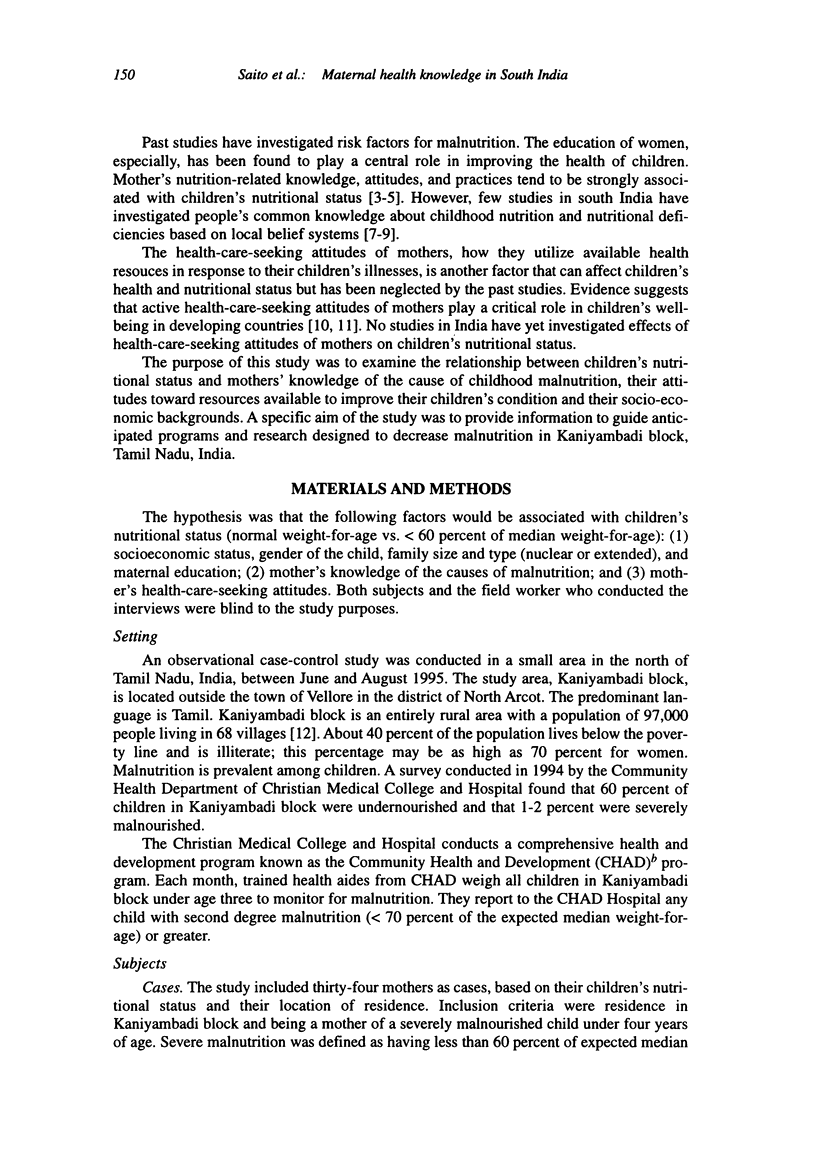
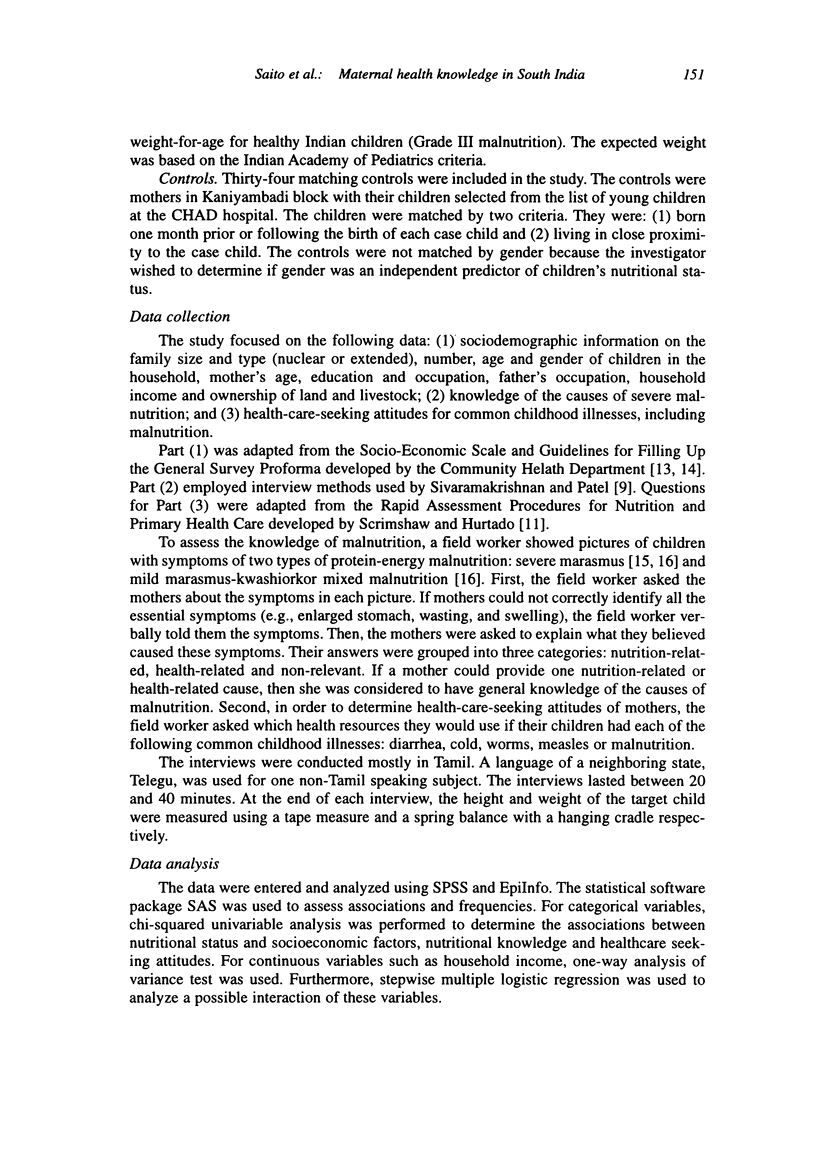
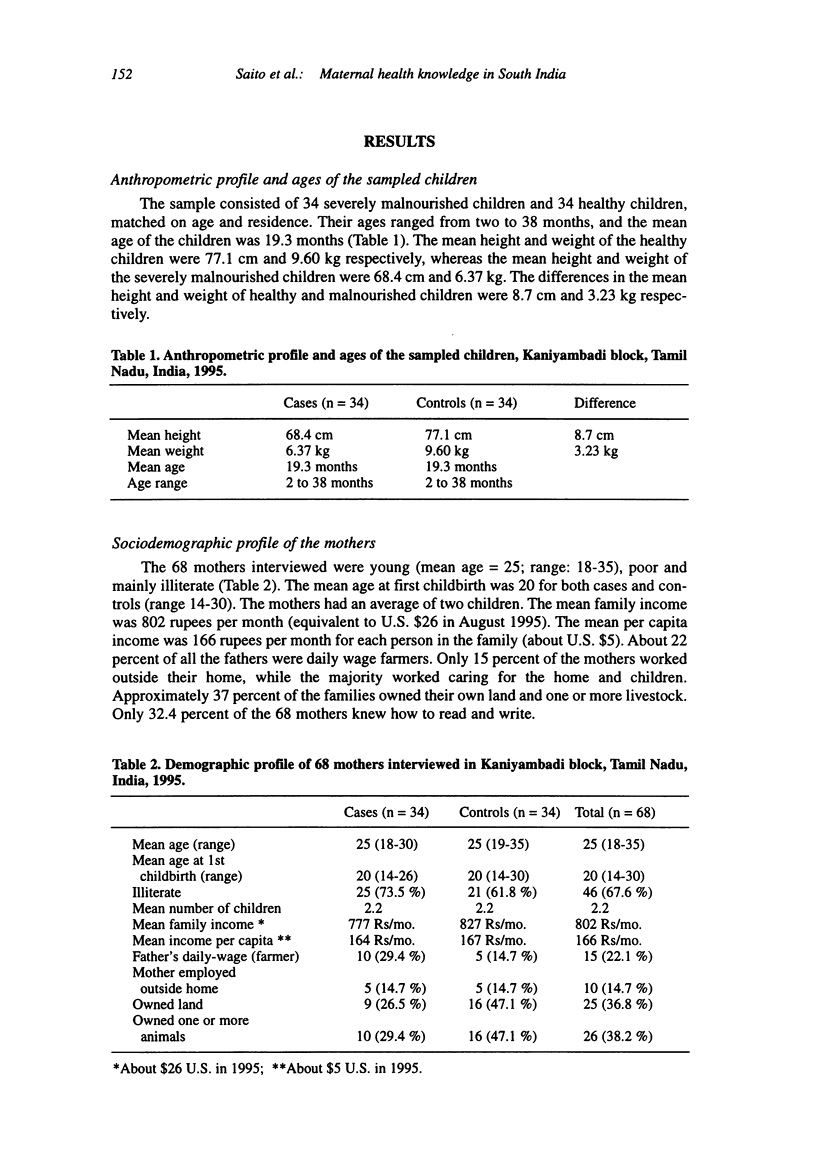
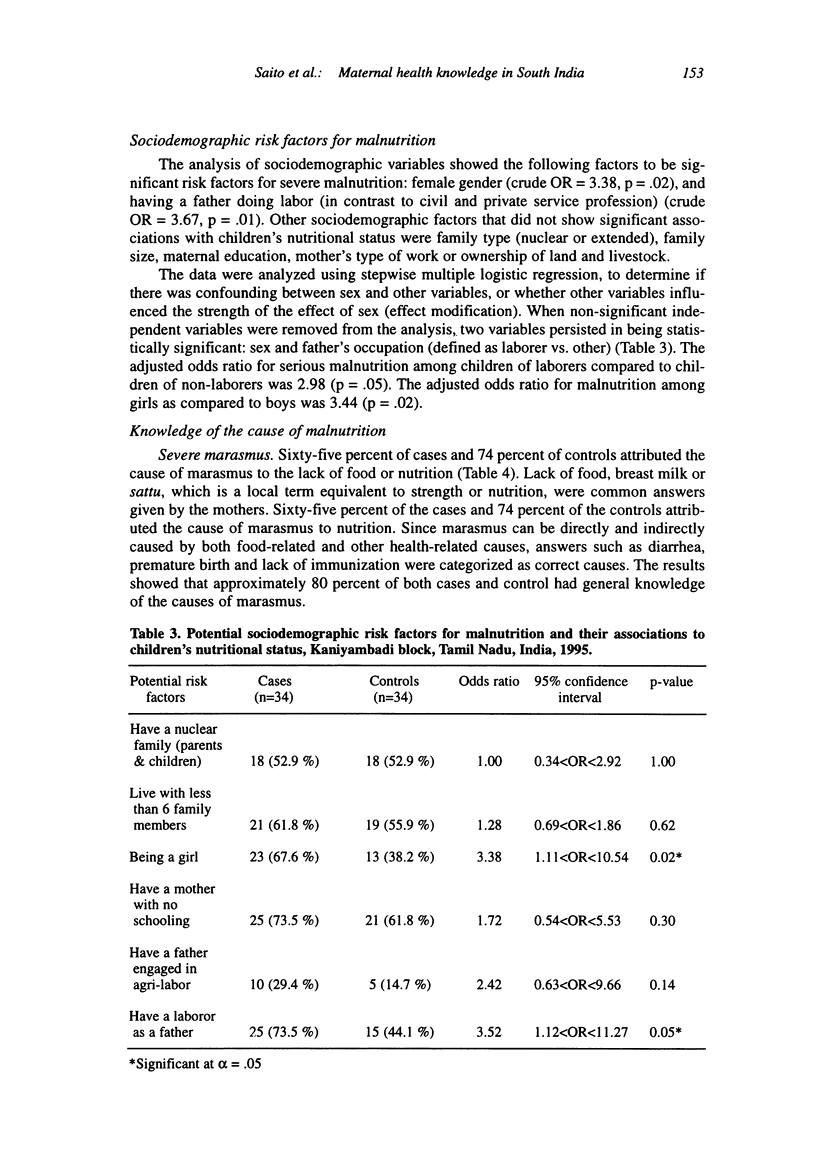
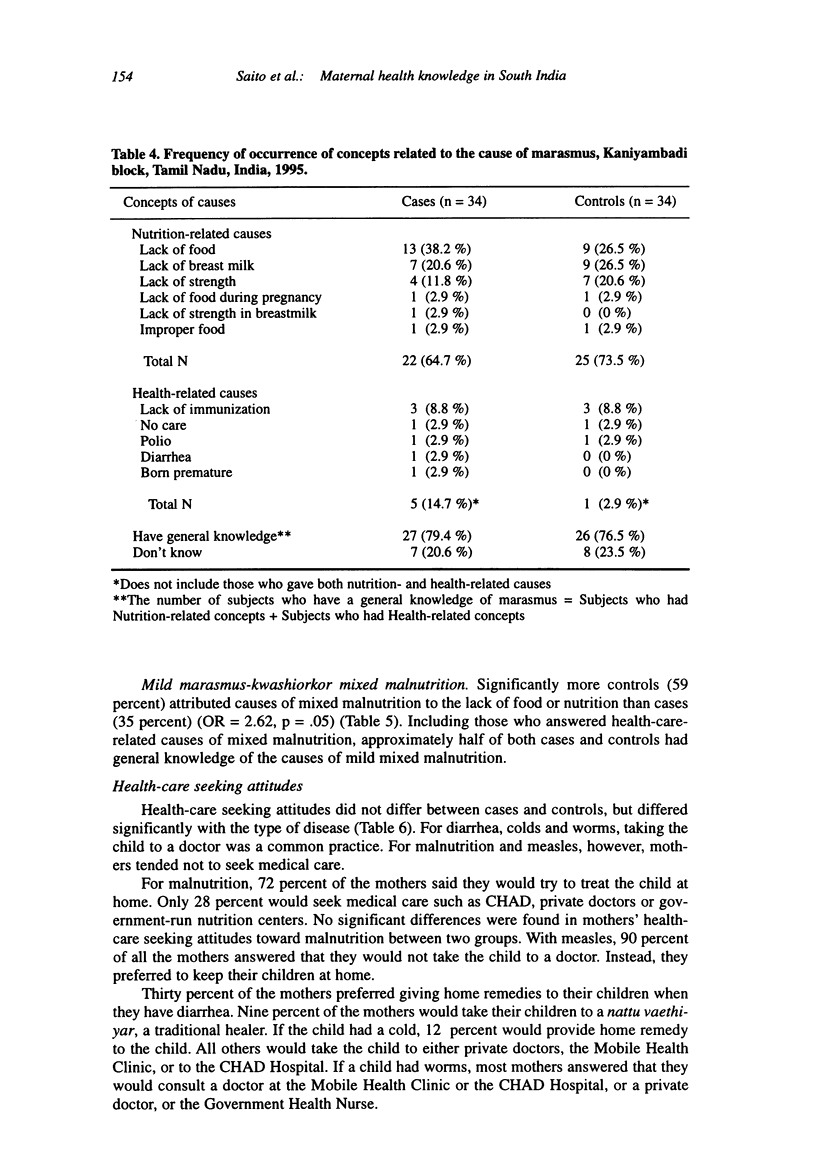
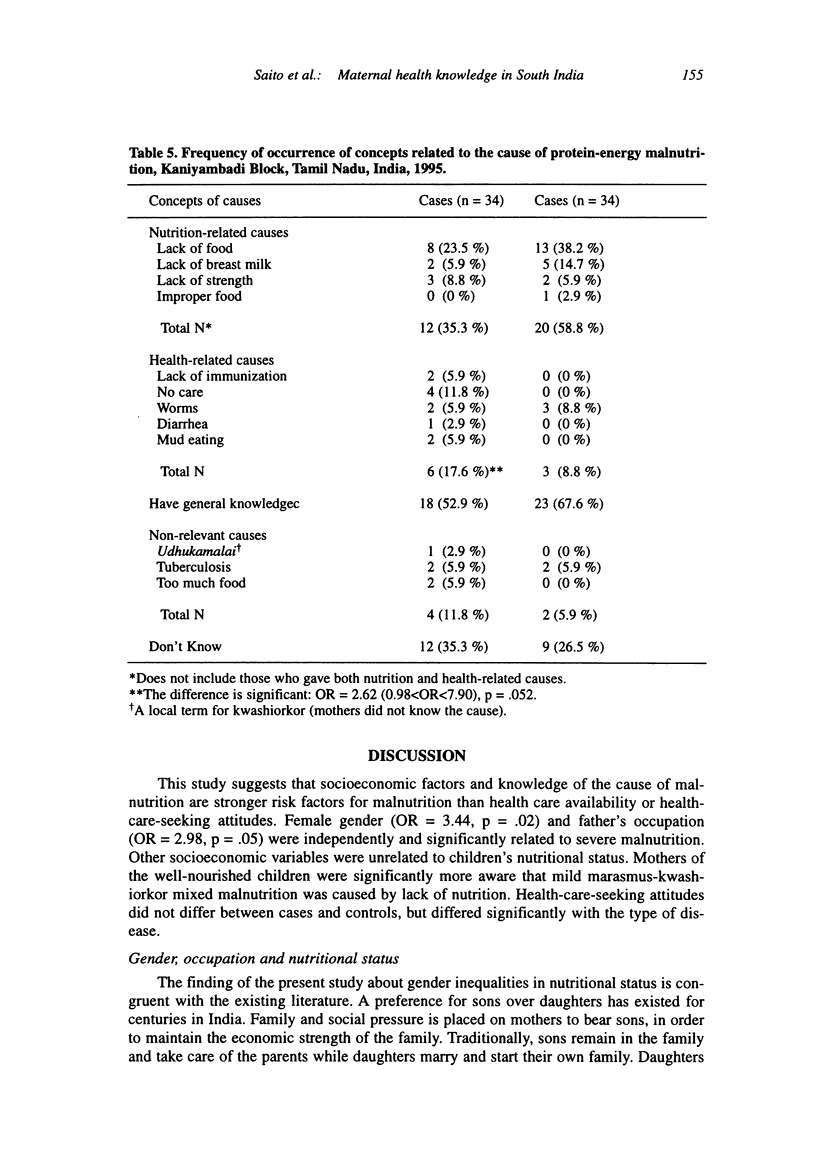
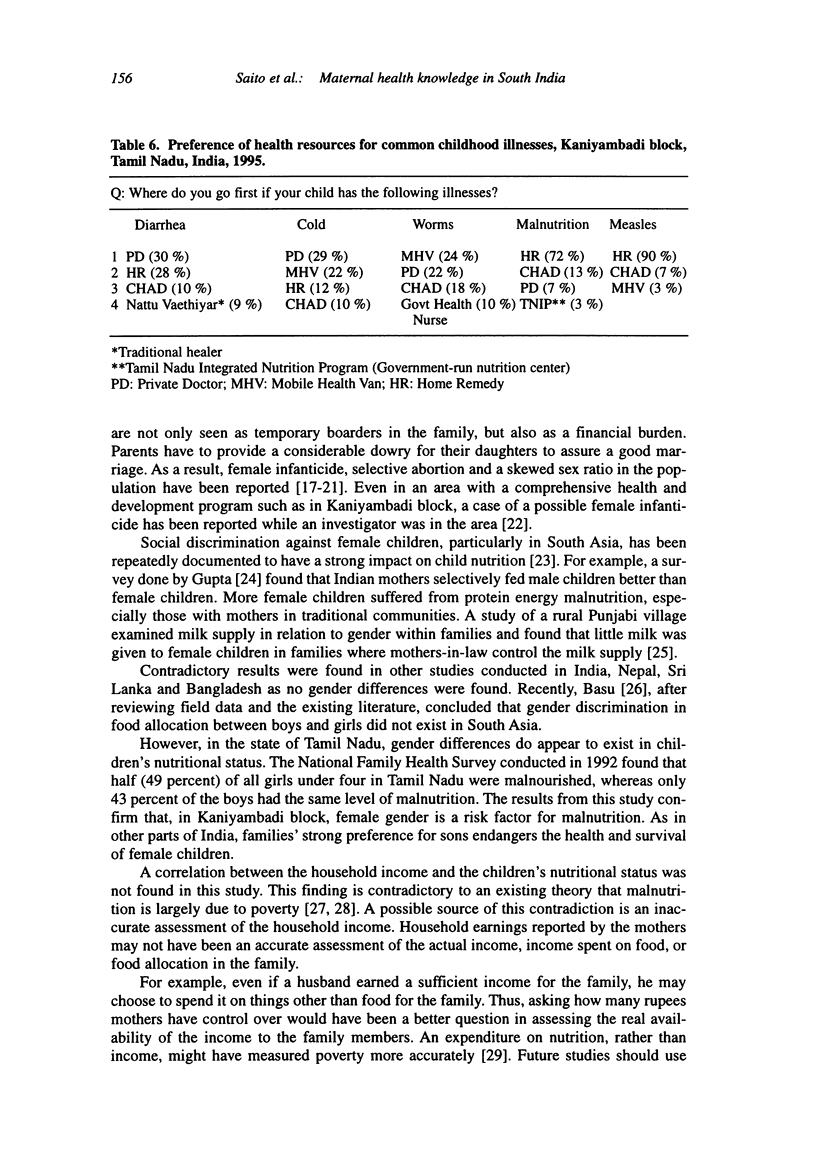
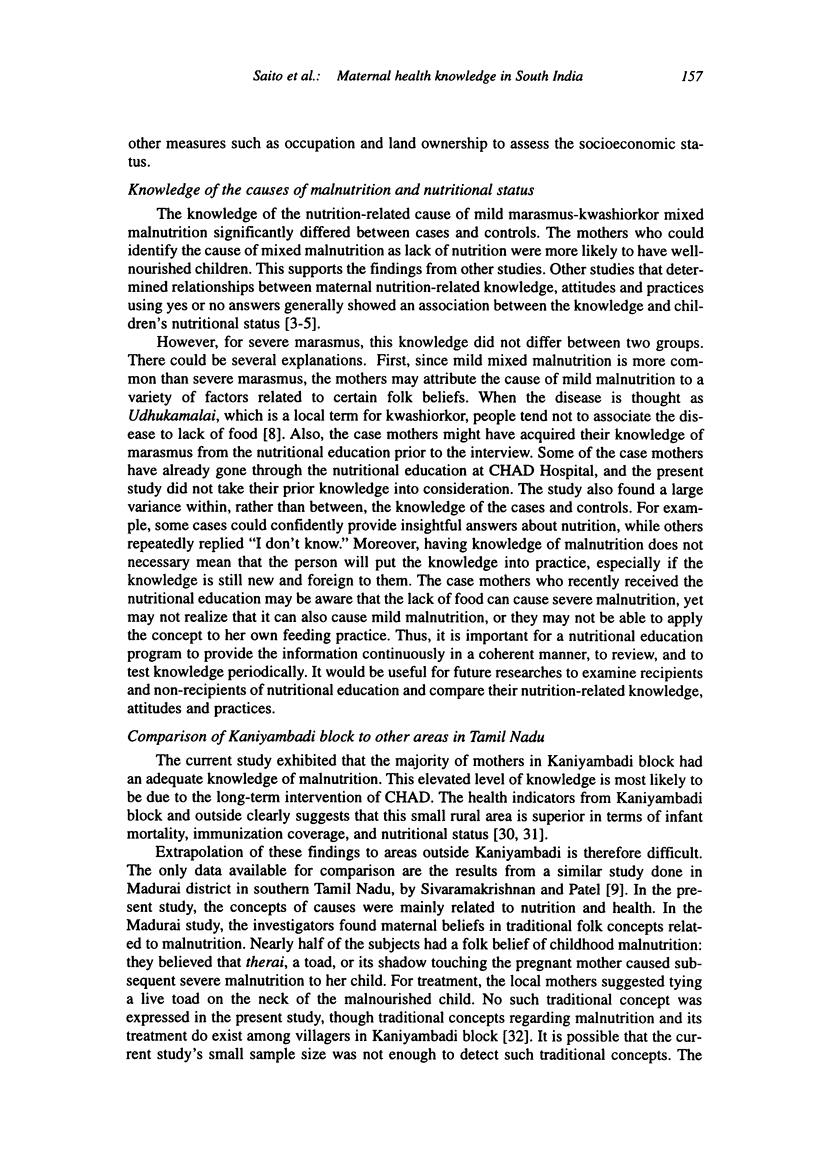
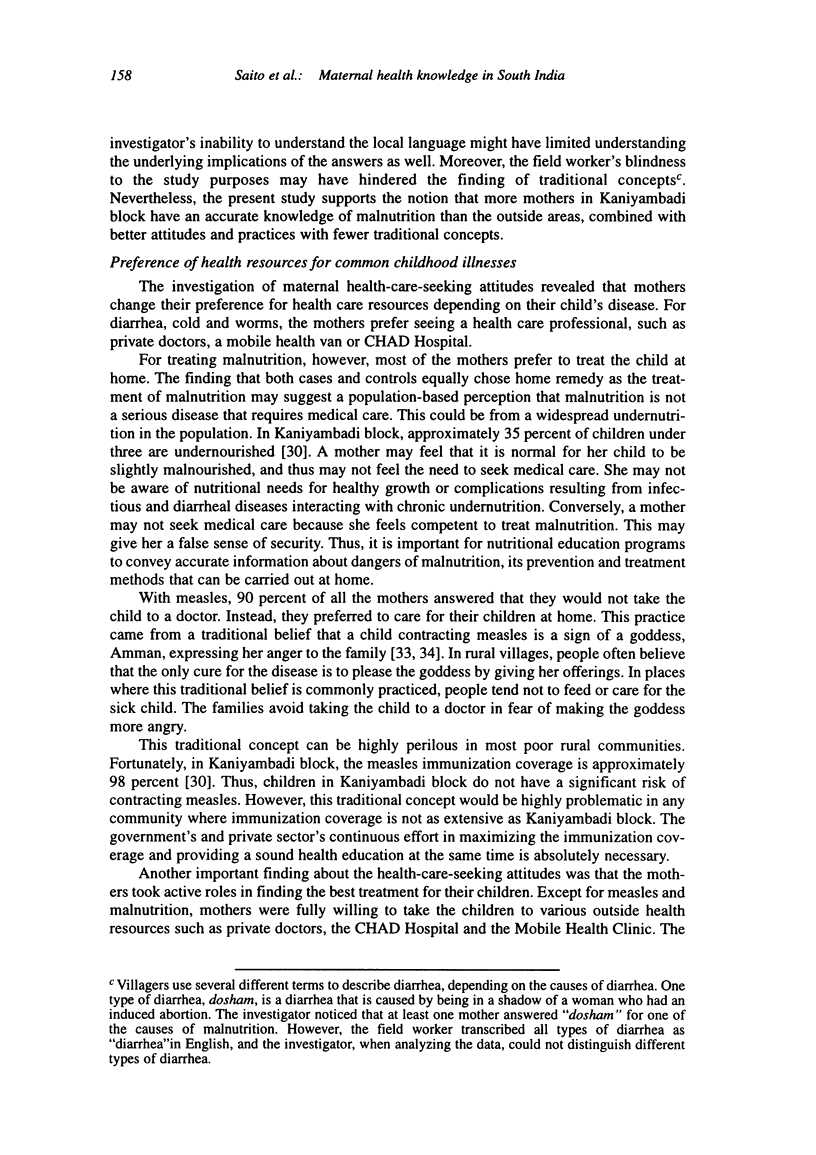
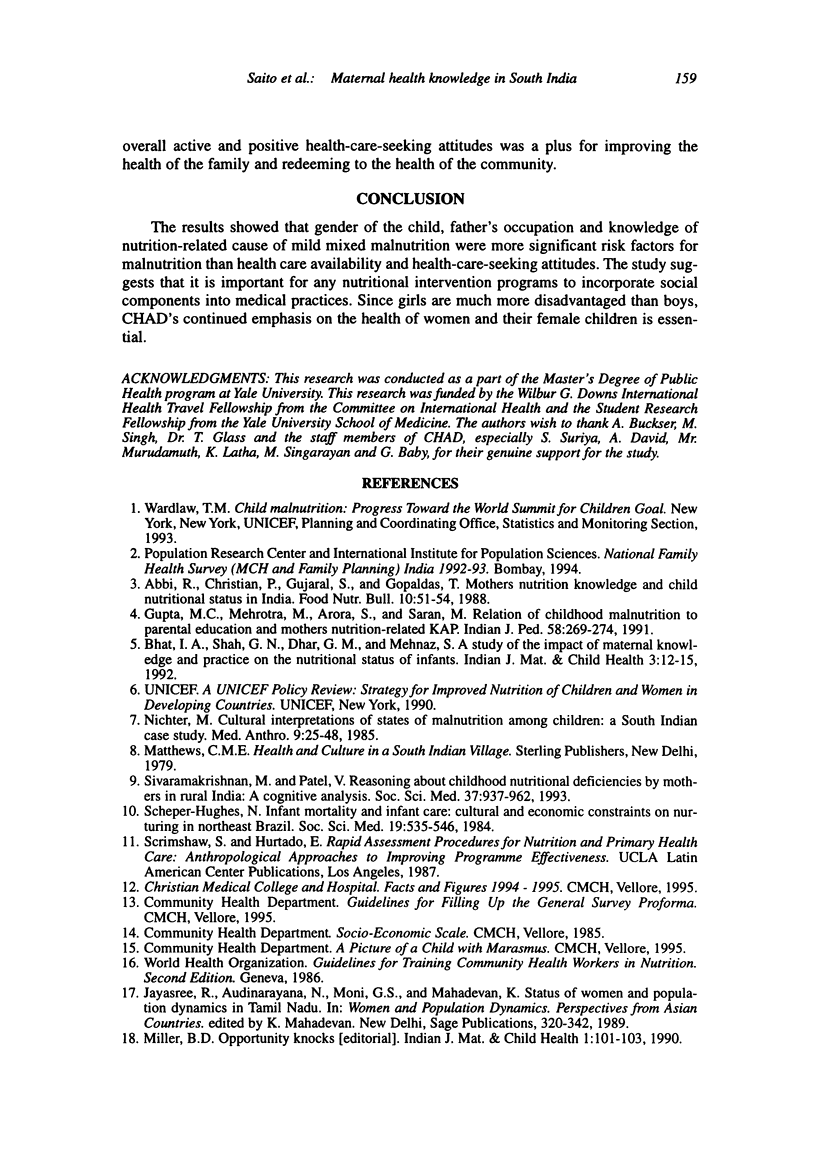

Selected References
These references are in PubMed. This may not be the complete list of references from this article.
- Basu A. M. How pervasive are sex differentials in childhood nutritional levels in south Asia? Soc Biol. 1993 Spring-Summer;40(1-2):25–37. doi: 10.1080/19485565.1993.9988833. [DOI] [PubMed] [Google Scholar]
- Bhat I. A., Shah G. N., Dhar G. M., Mehnaz S. A study on the impact of maternal knowledge and practice on the nutritional status of infants. Indian J Matern Child Health. 1992 Jan-Mar;3(1):12–15. [PubMed] [Google Scholar]
- Gupta M. C., Mehrotra M., Arora S., Saran M. Relation of childhood malnutrition to parental education and mothers' nutrition related KAP. Indian J Pediatr. 1991 Mar-Apr;58(2):269–274. doi: 10.1007/BF02751136. [DOI] [PubMed] [Google Scholar]
- Kumarbabu G. Societal attitudes to girl child -- leading to abuse and infanticide. Innovative interaction for change. ICCW J. 1993 Jul-Dec;2(2-3):49–52. [PubMed] [Google Scholar]
- Miller B. D. Opportunity knocks. Indian J Matern Child Health. 1990 Oct-Dec;1(4):101–103. [PubMed] [Google Scholar]
- Mull D. S. Traditional perceptions of marasmus in Pakistan. Soc Sci Med. 1991;32(2):175–191. doi: 10.1016/0277-9536(91)90058-k. [DOI] [PubMed] [Google Scholar]
- Nichter M. Cultural interpretations of states of malnutrition among children: a South Indian case study. Med Anthropol. 1985 Winter;9(1):25–48. doi: 10.1080/01459740.1985.9965916. [DOI] [PubMed] [Google Scholar]
- Scheper-Hughes N. Infant mortality and infant care: cultural and economic constraints on nurturing in northeast Brazil. Soc Sci Med. 1984;19(5):535–546. doi: 10.1016/0277-9536(84)90049-2. [DOI] [PubMed] [Google Scholar]
- Sivaramakrishnan M., Patel V. L. Reasoning about childhood nutritional deficiencies by mothers in rural India: a cognitive analysis. Soc Sci Med. 1993 Oct;37(7):937–952. doi: 10.1016/0277-9536(93)90148-w. [DOI] [PubMed] [Google Scholar]
- Thomson A. Why are potential women being killed? Midwifery. 1993 Dec;9(4):181–182. doi: 10.1016/0266-6138(93)90001-9. [DOI] [PubMed] [Google Scholar]


